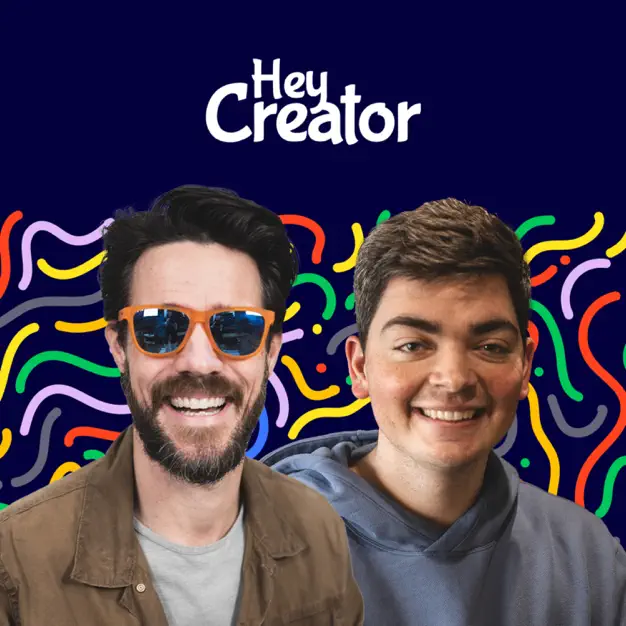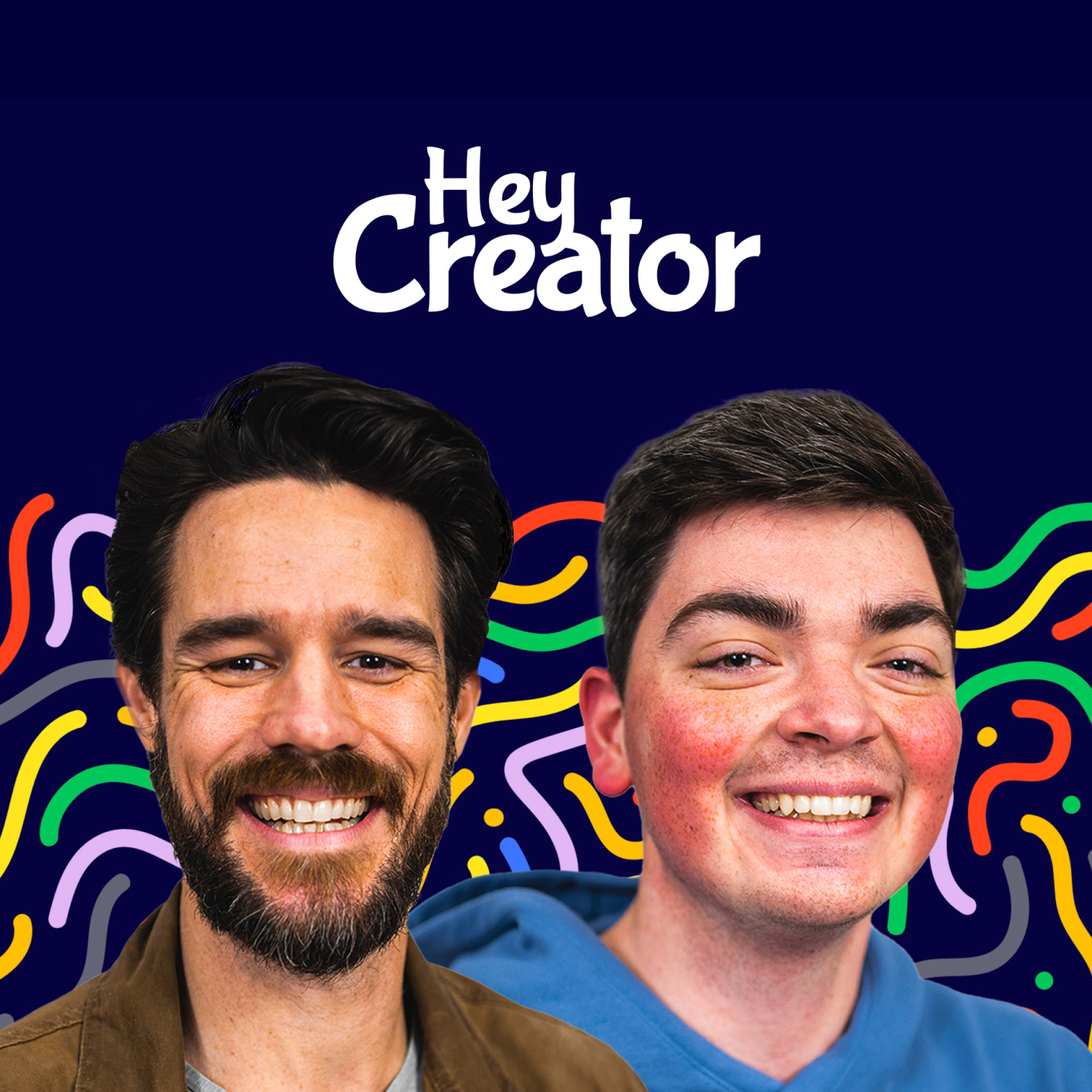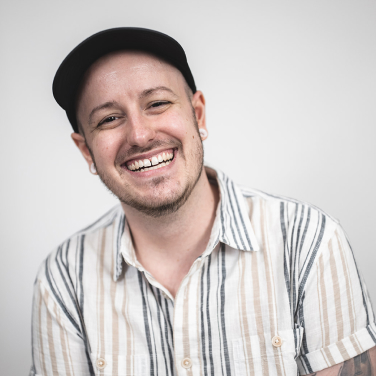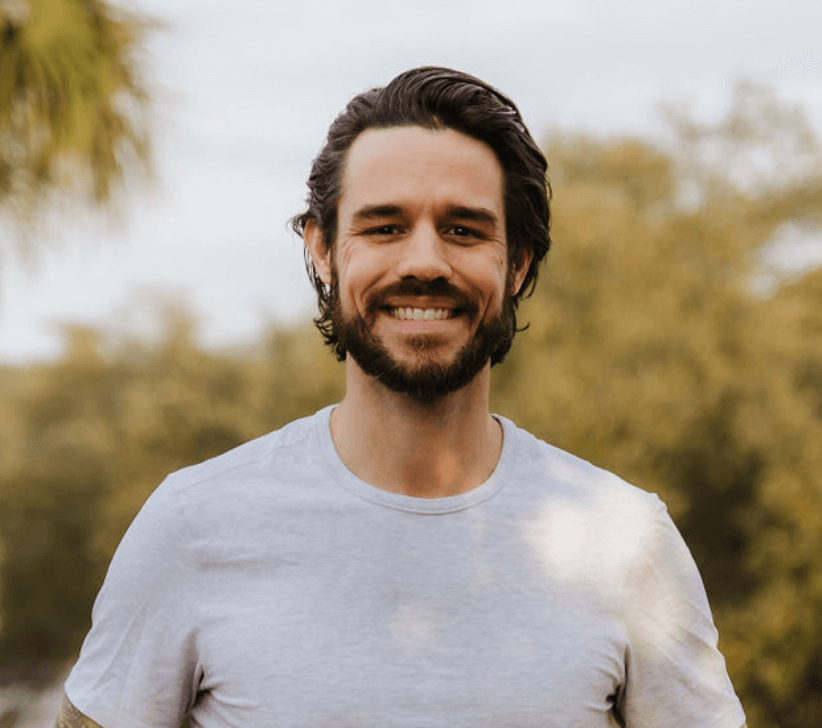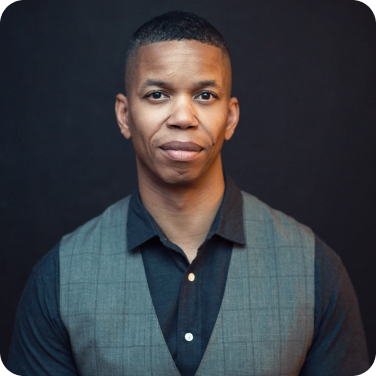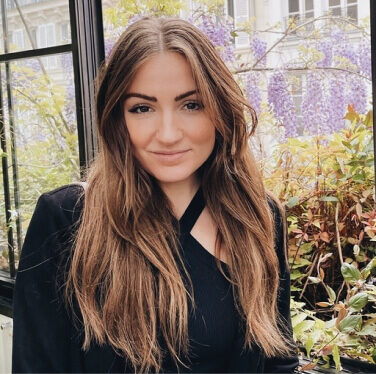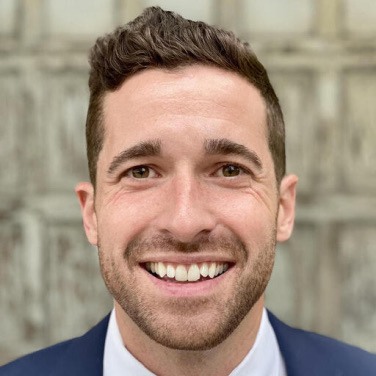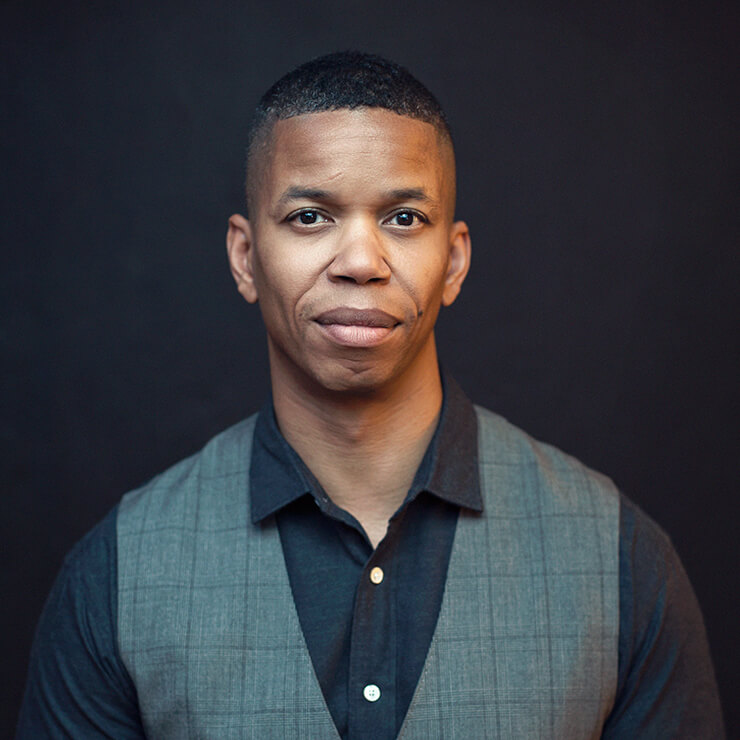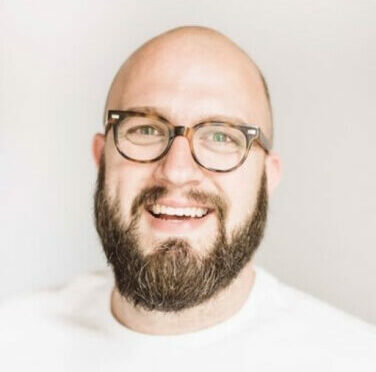[00:00:00] Matt Ragland: Can books make you a better content creator? Can they make you more money and help you get more clients? Well, yes. And also no, let me explain in this video. I’m going to share my top 10 books for creators. If you’re running a business based on content, you’re going to learn more from these books than any business school.
In these books, you’ll find the collected wisdom and experience from people like Steven Pressfield, Alex Hormozi and Anne Lamott and many others. But I have a challenge for you to keep in mind when you’re reading these books. It’s what keeps a creator from building a business that they love and also makes them a lot of money.
You have to commit to taking action from these experts. Success is 10 percent inspiration and 90 percent perspiration. So don’t stay stuck on the pages. Apply these lessons to your own content and business. If you have a favorite creator book, share it in the comments. I’d love to see it. Now let’s begin.
All of these are going to be really quick reviews, only a minute to a minute and a half each. And they’re all timestamped below. So you want to jump around to a particular book that looks interesting to you that you’ve been curious about, go ahead and do that. I divided these books into three categories, mindset, business, and process.
We’re going to start with mindset because I believe you really have to have a strong mindset in order to be a creator. Because for a long time, things just might not work out for you. And even if things work out through. You for a long time, there’s going to be a stretch in any creator’s journey where things just don’t seem to be working anymore.
So the mindset that you cultivate, the belief that you have in yourself is always going to matter. So here are three books that are going to help you build a rock solid mindset as a creator. The very first book is The War of Art from Steven Pressfield, and this is probably the number one book that maybe you’ve already read before, but if you haven’t read War of Art, then I highly recommend it.
Even if you have read War of Art before, then I would recommend rereading it. I read this book, if not every year, every couple of years, because Pressfield coined the term of the resistance that inner voice, that inner feeling of like, ah, you don’t have to do this right now, or maybe you could try it tomorrow, or you’re not quite ready for this, or you’re not good enough, you’re not prepared enough, all these little resistance feelings.
And what I love about The War of Art is even though he talks about it from his own creative process. It’s so applicable to many areas of life. I think he talks also about like his weight loss journey and how like, Hey Steven, you know, you don’t have to get off the couch today. Like, Hey, why don’t you? And what’s tricky about the resistance is that can use multiple good things against you be like, Hey Steven, really crushing it on this book right now.
You don’t have to go out and like do your run or go to your weight training session. These are things, this is like how tricky the resistance is. So just seeing it, calling it out and knowing that the resistance is after you in this way, really powerful, really valuable. Number one on the list, the war of art, the pathless path by my friend, Paul Millerd is one of my favorite books that I’ve read over the past few years.
And I think it’s a really great book for the modern creator, because really what Paul is talking about are unconventional paths. Like, uh, Uh, Paul was a high powered, uh, you know, MBA, worked at a consulting. I think he worked at McKinsey. It doesn’t say on here because I don’t think that he, he, uh, needs to like say that anymore.
But in his early thirties, Paul Millerd had everything he wanted, a high paying job working with CEOs, and instead of feeling fulfilled, he sensed something was wrong, and so this is Paul’s story of following his own path. Pathless path of looking for and following the callings that he had that led him to write this bestselling book to building a community of people who are kind of like burnt out on more traditional beliefs of what work has to be like and what kind of jobs you have to have.
So if you’re feeling kind of that tug on your heart and on your mind about like, I think I want something different. I’m not quite sure what it is. Yeah. That’s exactly what the pathless path is about. This feeling of, I know I want something different. I know I’m going in a particular direction, but I don’t know what it is.
That is the pathless path. And really, if you’ll allow me a little smuggle, it’s also something that, uh, Boyd Vardy talks about in the lion trackers guide to life. He talks about this first track mindset where he says, if I can just get the first track, of the lion, then I can follow it to the next track.
But I don’t have to know every single step of the journey. That’s what the Pathless Path is. So check this book out. Bird by Bird by Anne Lamott is one of my all time favorite creator books. And one of the reasons I love it is this chapter called Shitty First Drafts. And it’s a chapter that I’ve come back to over and over again.
It’s probably a chapter in a creator book that I’ve read more than any other because she is saying that even these people that you look up to, she, you know, Count, Count Anne Lamont in this. She’s like, we don’t wake up every single day feeling incredibly fulfilled and ready to work and just with like words streaming out of our fingertips.
This is something that has to be cultivated. This has to be something that at times you have to fight against. That’s, you know, think about Steven Pressfield and the resistance and the war of art. These are the same ideas. When you’re cultivating this mindset, and so Bird by Bird is something where Anne Lamott is giving her reflections on writing and life and, uh, creative work.
And it’s something that if you read it and if you apply these lessons, this mindset to the type of work that you do and an ability to just show up and keep doing the things, Bird by Bird is something that’s going to teach you a lot about how to do this creative work over and over again for the rest of your life.
The next category is business because as my friend Jeff Goins says, real artists don’t starve. And by the way, a little extra bonus book recommendation for you there. Uh, it’s a great one, but I see a lot in my own experience as a creator the past 10 years with the people in the HeyCreator community, the clients that we work with, that there’s a lot of hesitation often around selling, around marketing, around like getting paid for it.
The business side of being a creator. But if you don’t pay attention to this and you don’t get good at it, then you will not be in business very long as a creator to just be a hobby. It’ll just be like a little thing that you do from time to time. But if we’re talking about building a creator business, these four books are going to help you.
Perennial Seller by Ryan Holiday is one that you may not realize he wrote because best selling author, he’s mainly writing about stoic philosophy these days, but several years ago he wrote this book about the art of making and marketing work that lasts. And what I love about this is it is a business book and it’s also a creator book, so it’s a nice overlap there, but what Perennial Seller teaches you how to do is how to create work that isn’t just a flash in a pan.
How to create work that doesn’t just last for a month or a season or even a year. But how do you create something? that stands the test of time. How do you create something that is going to be around and something that you’re going to be able to refer to day after day, week after week, month after month, and year after year?
That’s what Perennial Seller is about. Highly recommended. Obviously Awesome by April Dunford is a book that you may not initially think about for creators, but it covers something that I don’t see creators talk about a whole lot, and that is positioning. And when you effectively position yourself, your content, Your products, your courses, your coaching, your community, that gives you such an advantage over the competition.
I got so much out of this book from April. She has a framework on the five components of positioning and how to use that position to instantly connect with your audience because they become your product, your offer, your service becomes the obvious choice for them because it’s so well positioned to fit their needs and solve their problems.
Dot com secrets by Russell Brunson is a book I read about eight or nine years ago. You can see it even has like. Uh, coffee stains on it from the time that I spilled a lot of coffee on this book. This is probably the most underlined book that I have. And it’s also one that you’re going to want to like sit with a notepad or sit with your your email marketing tool open with your courses open with notion open, whatever it is, because You’re going to take a lot of notes in this.
This is a book that is the most tactical and the most like framework driven. If you want to be able to sell more of your products with a great offer. And be able to like do that through an email marketing tool, like ConvertKit. If you have like a course platform or if you have a community platform like Mighty Networks, this is a book that is going to teach you exactly how to do that.
So, uh, dot com secrets by Russell Brunson, uh, is one that I’ve read probably three or four times. It is incredibly actionable. This is the one. of all the books that I’m recommending that if you go through this and follow the steps, you’re going to make more money. 100 million leads by Alex Hormozy is a book that is a great companion piece to dot com secrets because while dot com secrets shows you how to define your offer and then how to sell it through email marketing and funnels.
What 100 million leads shows you how to do is create more traffic and more interest and more prospective buyers to To that offer that you’re selling now, Hormozi also has a book called 100 million offers. That is also a great companion piece. Just didn’t make it into, I was only going to put one Hormozi book into this list, but all of those will help you create an offer, get more leads to it and sell it effectively through funnels, through follow up campaigns, through email, this is all going to make you more money.
These two books in particular, I’d say of all the books that are recommended on this list. com secrets and hundred million dollar leads are the two that will help grow your sales the most. The last category is process because without a good process you’re going to waste a lot of time, energy, and ideas.
So let me give you three books that will help you improve your process as a creator. The Art and Business of Online Writing by Nicolas Cole is a modern book for digital creators. So where the War of Art and Bird by Bird were written, you know, Many years ago, and kind of before all this stuff happened with social media and online writing, what Cole has done, I think is updated a lot of those best practices and mindsets while also mashing it together with, Hey, here’s how you can get paid.
Here is how you build an audience. These are things that you’re not going to find in war of art or bird by bird. But this is where I think that Cole really has his finger on the pulse of what is happening. And I certainly recommend that you follow him. You check out like some of the work that he’s done along with Dickie Bush, because what those guys are thinking about is how do you build a business and how do you build an audience in the new modern digital landscape?
So the art and business of online writing by Nicolas Cole is definitely one to check out. The best process book that I’ve read for creators is Free Time by Jenny Blake. I mean, even just the subtitle of it, Lose the Busy Work, Love Your Business, is one that I read this and I’m like, ah, yes, please, absolutely.
And what Jenny is really great at, like former Google, awesome, like just fantastic person, really smart, is she has like systems and processes down to a T. And so when you follow the advice in this book and it’s very actionable, it’s very like, these are things that you can do and implement in your business, in your art, in your creative work right away is it does take away a lot of those recurring tasks that you don’t necessarily need to be doing every time.
Talks about automations and processes and systems, ways that you can free up more time or be able to hand something off to other people in your business to be able to Potentially hire an assistant. If you read free time, then you’re going to be much better set up for this. Another thing that you can potentially do when you read free time is even if you don’t want to like grow your business really big and you don’t want to hire people, it will give you more free time because maybe something that used to take you 30 or 40 hours now only takes you 15 to 20 hours.
So this will literally give you time back. In your life, in your business, in your creative work, building a second brain by my friend Tiago Forte is one of my favorite books for creative work. And you may not think of it for creators because it’s not necessarily specifically written for creators. It’s written for everyone.
But I noticed that my creative output, the way that I was using. And sourcing and accessing the content that I was creating and the research that I was doing became so much easier and cleaner and faster when I started implementing second brain principles and especially the para framework, which stands for projects, areas, resources, and archive.
There’s another framework that Tiago talks about in this book called the code framework that is specifically designed for the output of creative information. The new thing that you can put together, uh, Of out of all the ideas and all the notes and all the research and all the highlights that you have and code stands for collect, organize, distill, and express.
And as creators, it is that expression piece that we love. The thing that we enjoy doing the thing that, you know, it’s always gets, get us paid. But I know for myself, before I started using second brain principles, before I started using para and code that. Pretty much all I did was like a haphazard spur of the moment.
What am I inspired by? Or what’s front front of mind right now? Expression just like, you know, what’s in front of me expression. And when I started doing more of this, then I noticed that I was getting much better at accessing old information. I was taking better notes and I was able to retrieve them easier so that then that distillation and expression piece of code was made so much easier.
And really, I never had to worry about the blank page anymore. And if you have ever like sat in front of your computer or you’ve ever looked into the eye of the camera or stared at the podcast, mic, and wondered, what am I going to talk about? What am I going to say? Using something like second brain for me has been a game changer because now I never have the blank page anymore.
I can always go find something that can be the source material for the new thing that I want to say. Those are my 10 most recommended books to strengthen your mindset, build your business, and improve your processes. Share your favorite creator books in the comments on YouTube, or hit me up at Matt Ragland on X, Threads, or LinkedIn.
As a creator, one of the most important things I’ve learned is that it’s impossible to be on this journey alone. I needed other creators in my circle for accountability, for support, to learn from, and And this is why we started the HeyCreator community. It’s a place to connect with like minded creators to follow a proven roadmap of success and get the support you need to build your creator business.
For more information, just go to heycreator. com slash community.
You know, those awesome HeyCreator newsletters that go out once or twice a week. The ones that sign off from me, Matt Ragland, well, I’m not really writing those. Not directly, anyway. The reason those newsletters sound so much like me is because they’re coming directly from the Back Catalog of Content, and I have the team at Automatic Evergreen to thank for that.
They research, write, edit, and publish. And send weekly newsletters on our behalf so that I can spend more time on the podcast and more time in the community. If you’re looking to send high converting newsletters that make you money, you can book a call at automatic evergreen. com.
We’re starting a new segment of the show where we’re giving direct advice to creators. If you have a question about anything in your creator business, Then write to us at hello and hey, creator. com. You can also comment on the YouTube videos. You can also DM Tim or I directly on LinkedIn or Twitter X.
Now I want to let you know that HeyCreator community members always get first dibs on questions. And if you want to join our weekly office hours for creators, where we can go deep on any question that you have, make sure you sign up and check it out in the links below. In today’s Creator Advice, Mason has a question about building a writing habit.
Tracy has a question about what type of camera to best use for YouTube. And Sam wonders if you can build an audience through video. Without showing your face. Thanks everyone for writing in and sending your questions. Let’s get to them. I also need to get up and fix things for like five more seconds.
Okay.
[00:15:32] Tim Forkin: That’s some building public stuff.
[00:15:36] Matt Ragland: Question came in from Mason Schroeder. What’s up, Mason? He’s also part of the HeyCreator community. Advice for people like me who are just starting to build a writing habit through a newsletter. Content, idea capture, curating without wasting time, finding your voice, et cetera, et cetera, et cetera.
One of the things that comes to mind for me on this is that it’s often a really good way to start a newsletter or a writing habit through curation and commentary. And what I mean by that is if you see something that you find interesting, collect, curate, create your newsletter, build your writing habit, based on those things that you find interesting, the commentary piece is Is what people often miss like they might just do like a few tweets or articles that they found interesting and like those can be good But if you haven’t established an audience yet, and this isn’t necessarily this mason This isn’t exactly what what he’s asking about but from a writing habit perspective like just giving What are your thoughts on trends, on topics, on things that you saw that you thought were interesting?
It could be even something that you heard, like, there have been a few HeyCreator, like, community members that have based a week of their own newsletter off something that we talked about in the community or something that came off of this podcast. So, curation, having an eye, having a, having a bit of taste for what you find interesting.
And then what I think is really, uh, helpful is, and will help you build that writing habit is adding your own commentary, your own thoughts, your own opinions to those things that you find interesting. So Mason, really good question. Thanks for asking. Now we’re going to go to Tracy Smith, who asked this on LinkedIn and he has, what’s the best budget Podcast slash vlog camera, other than an iPhone.
Cause I’ve been singing the praises of like continuity camera on the iPhone. That’s what I’m shooting on shooting on right now. But, you know, Tim, you’re one of my go to people when it comes to video. So what’s, what’s your answer to this? And I have a couple of thoughts as well, but what do you, what do you think?
[00:17:44] Tim Forkin: As we’re recording this, I’m in the process of setting everything up to move into the new house that I bought. And I was doing a bunch of research just to see like, do I need to upgrade my camera? I really don’t like I might use my continuity camera on my iPhone here. Uh, I might use my Sony a 6, 400, which is a common answer.
It’s a bit of an older camera. Um, but the Sony EV 10 is what I’ve seen a lot of vloggers and, um, people use. It’s kind of like the. It’s like the vlog version of the A6400. Everything on the inside is exactly the same. Like, it’s the exact same, um, sensor. Exact same, like, everything on the inside. I’m not, like, the biggest camera nerd, so I don’t know, like, all of the things.
But, you can get yourself a decent lens and a Sony EV 10. I think the lens I would choose if you’re doing more Uh, vlog stuff or just like wide angle stuff. Like on Matt and I are shot right now, probably closer to like a 16 to 24 millimeter lens, uh, for the Sony EV 10, that would be my, that’s what I’m, I would tell anybody right now is like, if you don’t want to use your phone, you don’t want to go buy a 5, 000 camera and lens set up, then the Sony EV 10, I believe the body itself is like around 600, 700 bucks right now.
[00:18:52] Matt Ragland: I had initially told Tracy on LinkedIn that he should pick up the Sony EV 10. A6400, but like on B& H right now, I think it’s closer to a thousand dollars. I’ve shot in the past with the Canon M50, which I think has since gotten an upgrade. I got it like five years ago. Uh, that’s a decent one as well. Um, I don’t, the thing that I would say about the Canon M50, it is a 2, 000.
A little cheaper, like more six, 700, but it doesn’t work very well. I don’t think it’s like a webcam, even if you like, you know, connect it. Uh, so that’s, that’s like a 50, but Sony EV 10. Yeah. Like I said, he said like seven, 700 ish dollars. I think that’s a good, it’s a good recommendation. Yeah. And you made the, no, it was like, Hey, I’m not a big, I’m not a big, uh, camera nerd and I’m, I’m not either, but I think anyone listening to this, I think If you are a camera nerd, you’re probably not asking this question.
So for all of us, not camera nerds, Sony EV 10, or again, just use, use your iPhone.
[00:19:50] Tim Forkin: All right. Another one from Sam from the HeyCreator community. Is it possible to grow a large creator following without showing your face on video, Matt? I know there’s this rise of faceless YouTube channel businesses, but.
I want to know what you think about this.
[00:20:03] Matt Ragland: Yeah, for me, I, anything’s possible. I think that’s what is so great and so tempting about the internet and about content. It is possible to grow a large following in a large business without showing your face. The thing that I believe is a little bit more challenging when it comes to this is everything else about the video has to be like.
So high quality, like the information that you’re delivering. Like I can think of a few, uh, YouTube channels. A lot of times they’re in more of the education space that rely on, um, presentation that rely on illustration, uh, different things like that. It’s not a creator necessarily like showing, showing their face.
There’s a lot of like, you know, I went down a Lord of the Rings rabbit hole, like a couple of years ago. And now I, now I can’t, I can’t extract myself from it. Not that I want to, I love Lord of the Rings. But all of these are like. Yeah, I don’t, you don’t see those people. They’re just like talking about the history of middle earth.
And so there are, there are definitely, you can find successful creator businesses that don’t have any like, um, like face first creator, uh, content. But I do think like you have to rely on like. The strength of your information or the design of it in order to really, really succeed. That’s my, that’s my thought.
It’s possible, but everything else has to be like really, really, really good.
[00:21:24] Tim Forkin: Yeah. And I would say that being faceless leans a lot more entertainment creator as opposed to educational creator, because as an entertainment creator, you can use. All of pop culture or like niche culture to tell the story. Or you can pull in clips, you can pull in quotes, you can pull in pictures, everything from other people.
But if you’re teaching and it’s your genuine advice and you don’t want to be on camera, I think you can do that. I think it’s going to be harder. Sam had another question. How should I be thinking about personal brand versus business brand? And is there ever any room for overlap? Example is, A brand you are, you are actively the person running it, such face of the brand.
[00:21:59] Matt Ragland: Yeah, we’ve actually been talking about this a lot. Uh back backstage at HeyCreator and it’s something that i’ve thought about a lot over You know my 10 plus years of being in creator businesses And I think that if you want to run a business Then the content has to be about the business the vast majority of the time uh, like if you’re thinking like 80 20 80 20 rule and I don’t know if this is the perfect application of that of that suggestion, but I’d say like at least 80 percent of the content has to be about The main thing that you’re doing.
Cause then it’s just like a personal account. You always have to think about if you’re running a business and people come to, even it’s your personal channel. I think about when people come to my Twitter, my Twitter feed or my LinkedIn feed, or like when I was doing YouTube and focused on productivity, the things that they see are going to be what they associate you with.
And if it’s this like pretty like diverse mix of interests and personal things, uh, In with your business then that is, they’re not gonna, it’s gonna be confusing to them about what you do. And if you, subconsciously, I think a lot of people will wonder like, is, is this business thing a serious thing? And let the only caveat to that.
And like we showed at the beginning of the episode, they’re like all these caveats to things all the time. But the caveat that is like, if you’re already like really good or like. semi or famous at something. If you already have like a lot of, um, certifications, I don’t know if that’s the right word, but you’re, you’re like known as an expert, then sure, you can probably talk about some other things, but like, for me, for, for us, like, I have to talk about creator things.
I have to talk about probably even more specifically newsletter and course things. If I want to get more clients, if I want to get more people in the community, if I want to get more subscribers to the youtube channel to to the newsletter, all those things. So there can be overlap and I think that the people who do it really well have figured out what their ideal balance is between business content and personal content because people still want, especially on social media, want to see the person behind the brand.
We connect with people more than we connect with brands, but you still have to like, be very like emphatic and consistent about like, this is what the business, this is what the business is versus this is what I enjoy doing on the weekend or this is, you know,
[00:24:26] Tim Forkin: The case for posting a bunch about your business, like you’ve mentioned 80, 20, if I posted five times a day about, uh, creator businesses, I think that gives me the leeway to post once a day about, um, The Detroit Pistons or what I eat for dinner, you know, like for sure, it’s just, it’s just that little piece of extra supporting, like, just like a TV show where you fall in love with the characters, you are that for someone online, whether it’s any, like any platform, you are that person for them.
So if you can like weave in, and this is the other way that I would take this is like, Use the things that you love to explain to people the stuff about your business, right? So if I was teaching about brand loyalty, if not, I’m not a Taylor Swift fan, but I would bring in Taylor Swift because she would help tell that story of people who are wildly loyal to her brand, right?
So if you. Are interested in something, how can you find a way to use that to help other people with whatever your business is around? And that way you’re kind of scratching the itch. Now, if, as Matt said, if you are doing everything, if you are posting about business and what you had for dinner and a problem you’ve had with your girlfriend and just everything, like that’s not really going to help.
It might just make you someone people like or don’t like, but that doesn’t necessarily like always help you in your financial outcome.
[00:25:48] Matt Ragland: Yeah. It’s probably not going to get you more customers. It’s probably not going to get you more clients. Um, again, like there’s a ratio to it. Uh, and also think like timing of posts can play into that as well.
Like I try and post about more personal things or like, I’ve talked about how I post about dad stuff. But I really only do that on the weekends. And if I have like a pop culture take, then I’ll usually try and save that for late afternoon or even, even the evening. So if I’m posting about the bear, then a lot of times I’ll post about the bear, uh, late in the afternoon or in the evening and not like first thing in the
[00:26:20] Tim Forkin: morning.
One very small last piece of this is like, if you want to have a separate account, that’s just your personal account. Or a separate account, that’s just your business account. I think Tim Stoddart said it in episode zero of the HeyCreator show. It was like, if you want to build a business around something.
Just pick a new domain, pick a new social handle and start talking about it there, right? Like if, if you really care about separating church and state, then I think like separate them, you know, like they take the time to do that. All right.
[00:26:49] Matt Ragland: That’s going to do it for creator advice. Thanks so much for writing in.
You can always reach out to Tim or I on Twitter, Twitter X or LinkedIn, or make a comment on this YouTube video and we’ll make sure to cover it in a future edition of the show. We need a sponsor. Someone sponsor
[00:27:03] Tim Forkin: creator advice. That’s right.



